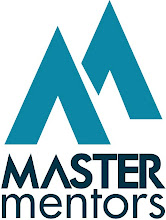Facebook
has revolutionised the way people connect, communicate and socialise around the
globe. With over 900 million users as of May 2012, Facebook has more people
than most countries in the world. It is the mostly actively used social
networking site in the world today.
Facebook founded in
2004, it has grown exponentially surpassing all other competitors. FB was not
meant to be a company but provide the user with the best user experience. In
his own words Zuckerberg, CEO, Facebook said, "Simply put: we don't build
services to make money, We make money to build better services." Today, Facebook is already generating a highly
profitable annual revenue of over one billion US Dollars and is valued over 50
Billion US Dollars, a proud achievement for a company aged under 10.
Here is a look at things that make Facebook so successful:
Socializing
Facebook has become the new means for socialising. People can connect, communicate and share events about their lives on facebook. It has become a way people express themselves.
Facebook has become the new means for socialising. People can connect, communicate and share events about their lives on facebook. It has become a way people express themselves.
Focus
on Users
Facebook is a tool that gives the user a freedom to share his thoughts, events, opinions with the rest. It is built around the user. All the services and usability aspects are user centric and that makes FB so popular.
Smart ways to connect people
Facebook is a tool that gives the user a freedom to share his thoughts, events, opinions with the rest. It is built around the user. All the services and usability aspects are user centric and that makes FB so popular.
Smart ways to connect people
One of the smartest algorithms devised by FB is to connect people
who know each other. The intuitive and smart features make FB popular. The
recommendations are based on similar preferences, likes and interests.
Like-minded people can communicate with each other easily and develop their
social networks effectively. This enables millions of people with diverse
interests, backgrounds and cultures to interact with each other.
Simplicity
Facebook has a simple and elegant user interface. It is very intuitive and requires very little effort on the part of the user to use it. It has a consistent layout and good graphic design which makes it appealing to the users.
Facebook has a simple and elegant user interface. It is very intuitive and requires very little effort on the part of the user to use it. It has a consistent layout and good graphic design which makes it appealing to the users.
Dynamic
While Facebook was started in a dorm room, it has certainly lived up to the growing needs of the users. The initial idea was to allow campus students to communicate freely with each other. However, with strategic insights and promotions they built an exponential user base. The Facebook team has been dynamic and adaptive to the growing user base and its needs. The FB timeline, tickers and several other features are prime examples of the dynamic nature of FB.
While Facebook was started in a dorm room, it has certainly lived up to the growing needs of the users. The initial idea was to allow campus students to communicate freely with each other. However, with strategic insights and promotions they built an exponential user base. The Facebook team has been dynamic and adaptive to the growing user base and its needs. The FB timeline, tickers and several other features are prime examples of the dynamic nature of FB.
Entertainment
Facebook has become the ultimate source of entertainment for the youth. There are many games that have become increasingly popular due to FB. Farmville, Backyard Monsters are just some of them. The games coupled with social networking provide a fun filled platform for the youngsters.
Facebook has become the ultimate source of entertainment for the youth. There are many games that have become increasingly popular due to FB. Farmville, Backyard Monsters are just some of them. The games coupled with social networking provide a fun filled platform for the youngsters.
Facebook
Ads
Digital
marketing campaigns are revolved around FB users. A lucrative user base of more
than 900 million attracts advertisers and companies. The Facebook ads are shown
based on the likes, comments and profile of the user, making advertising more
relevant.
Facebook Pages
Facebook Pages
Most of
the fortune 500 companies have a Facebook corporate page. It allows them to
talk about their products/services, interact with the users, get a real world
feedback and enable communication. Most of these companies regularly update
their pages, post relevant contents and offer something for the end users too. Facebook
pages have become an effective way of engaging potential customers. It has become
a social business tool too.
Facebook Aps:
Facebook has created an amazing eco-system with lakhs of applications being built by third part developers which help in engaging the members.Facebook has devised a unique win-win system that enables the third party developers to not only further the user experience and engagement levels on this fantastic social media portal, but also enables them to successfully monetise them depending on their popularity.
Today, with over 800 miliion users world wide and average user engagement levels spanning the highest number of hours per user for any online platform, Facebook nation could be the third largest and the richest nation in the world.
